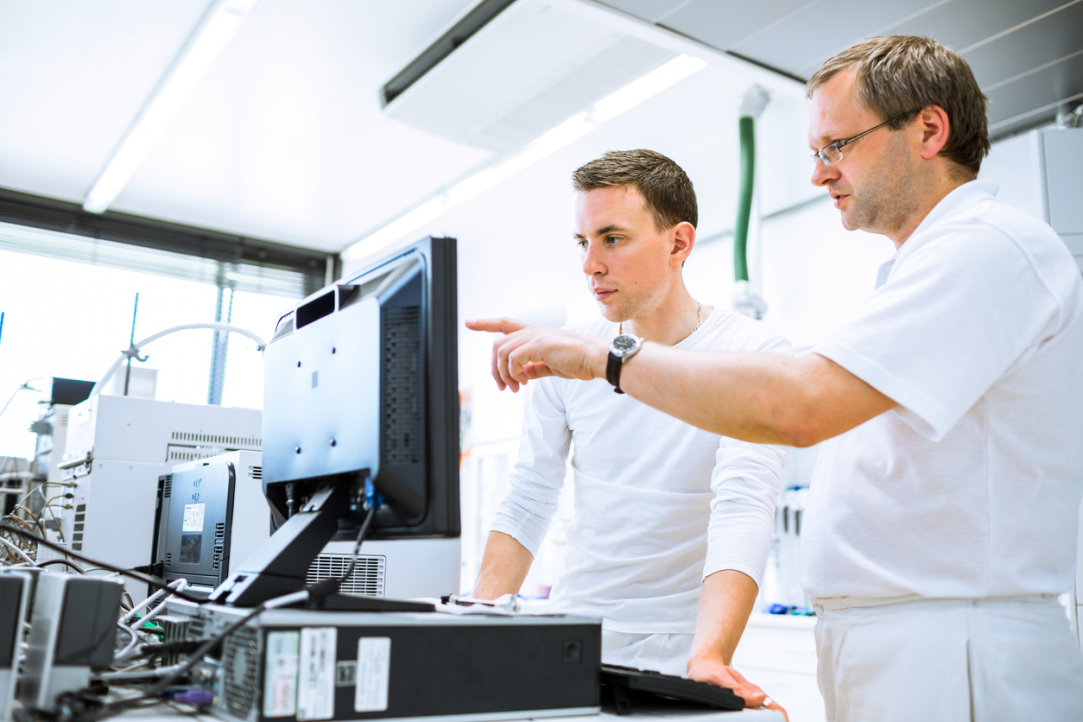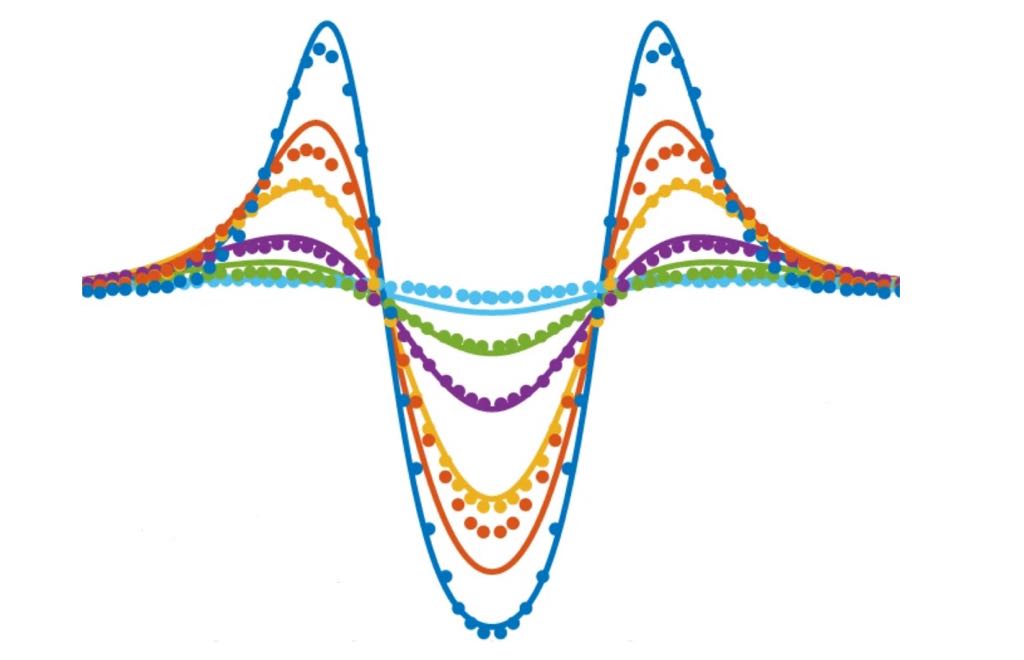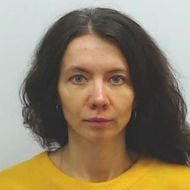'We Can Modify Electron Spins as Required by Applying an External Magnetic Field'

Researchers from HSE, MIPT, and the Russian Academy of Sciences Institute of Solid State Physics, jointly with colleagues from the UK, Switzerland, and China, have conducted a study on the characteristics of thin films composed of platinum and niobium. Both the experiments and the theoretical calculations have confirmed that when in contact with a superconductor, platinum exhibits a spin, creating a potential for its effective use for data transmission. Platinum atoms have no magnetic moment, paving the way for the development of even smaller chips utilising this novel structure compared to conventional spintronics. The paper has been published in Nature Communications.
One of the foremost objectives in contemporary science is the development of a new elemental base for data processing devices. Current semiconductor technologies are nearing their limits, and concerns are growing that the trend described by Moore's Law stating that the number of transistors on a microchip doubles every two years is slowing down and may soon come to a complete halt due to purely physical constraints, as it is impossible to produce a transistor smaller than a single atom. Therefore, new devices will need to rely on alternative physical principles.

Superconducting spintronics presents a promising solution to this challenge. In contrast to electronics, the information carrier here is not an electron's charge but rather its spin, which refers to the orientation of its rotational axis. According to the Pauli Exclusion Principle, two electrons in an atom must have opposite spins: one directed upward, and one directed downward. This makes it possible to associate one with zero and the other with one, enabling the recording of information in binary form. For such devices to function, it is essential to control the orientations of electron spins while minimising heat losses. In superconductors, electrons move without encountering resistance, but they do so in a distinctive manner by forming Cooper pairs. Within a Cooper pair, one electron's spin is oriented upward while the other's is oriented downward, resulting in a net spin of zero, and such a configuration cannot transmit information encoded in the spin. To obtain pairs in which both spins are oriented upwards, conventional approaches involve the use of structures where a thin layer of ferromagnetic material interfaces with the superconductor. However, this approach has its drawbacks, with the primary concern being that the intrinsic magnetic fields within ferromagnetic materials lead to interactions among the computational elements.

Irina Bobkova, Professor at the HSE Faculty of Physics and Head of the Laboratory of Spin Phenomena in Superconducting Nanostructures and Devices at MIPT, explains: 'We opted for an alternative approach to the problem and used platinum instead of ferromagnets. Since platinum has no magnetic moment of its own, we can modify electron spins as required by applying an external magnetic field. The experiments have confirmed our hypothesis.'
The platinum-niobium 'sandwiches' developed by the researchers will make it possible to construct smaller, more compact computing devices. The experiment demonstrated that when a thin layer of platinum interacts with a superconductor, Cooper pairs penetrate into the platinum layer due to the proximity effect. Through the application of a magnetic field, the physicists successfully reoriented the electron spins of these pairs, thus validating the feasibility of information transmission.
The study team includes researchers from MIPT, HSE, the RAS Institute of Solid State Physics (Russia), the University of St Andrews and the Rutherford-Appleton Laboratory (UK), the Paul Scherrer Institute (Switzerland), and Shanghai Jiao Tong University (China).
Irina V. Bobkova
See also:
Physicists Propose New Mechanism to Enhance Superconductivity with 'Quantum Glue'
A team of researchers, including scientists from HSE MIEM, has demonstrated that defects in a material can enhance, rather than hinder, superconductivity. This occurs through interaction between defective and cleaner regions, which creates a 'quantum glue'—a uniform component that binds distinct superconducting regions into a single network. Calculations confirm that this mechanism could aid in developing superconductors that operate at higher temperatures. The study has been published in Communications Physics.
'Even among Geniuses, Luck Plays a Role in Winning a Nobel Prize'
Denis Bodrov studies particle physics and works at one of the four electron–positron colliders in the world. In this interview with the HSE Young Scientists project, he talks about his efforts to go beyond the Standard Model, discusses tau leptons, and shares his affection for Moscow.
Physicists at HSE University Reveal How Vortices Behave in Two-Dimensional Turbulence
Researchers from the Landau Institute for Theoretical Physics of the Russian Academy of Sciences and the HSE University's Faculty of Physics have discovered how external forces affect the behaviour of turbulent flows. The scientists showed that even a small external torque can stabilise the system and extend the lifetime of large vortices. These findings may improve the accuracy of models of atmospheric and oceanic circulation. The paper has been published in Physics of Fluids.
New Method for Describing Graphene Simplifies Analysis of Nanomaterials
An international team, including scientists from HSE University, has proposed a new mathematical method to analyse the structure of graphene. The scientists demonstrated that the characteristics of a graphene lattice can be represented using a three-step random walk model of a particle. This approach allows the lattice to be described more quickly and without cumbersome calculations. The study has been published in Journal of Physics A: Mathematical and Theoretical.
‘It Was Interesting to See How Our Chinese Colleagues Work’: HSE Researchers Take Part in Hefei Summer School
This summer, Diana Sukhoverkhova, Daria Mazur, and David Kagramanyan, research assistants at the MIEM HSE Laboratory for Computational Physics, spent five weeks in China. At the Future Scientist Exchange Program (FuSEP) summer school in Hefei, they worked in new fields of science together with their Chinese colleagues. HSE's promising scientists spoke to the HSE News Service about their intense and productive time in China.
‘The Fundamental Principle of Scientific Knowledge Is Honesty’
Daria Mazur has wanted to pursue science since she was 13 years old—ever since she discovered in the seventh grade that she was good at physics. In an interview for the HSE Young Scientists project, she spoke about her theoretical research on the electric double layer, speed reading, and the MGMT song ‘Little Dark Age.’
Russian Scientists Reconstruct Dynamics of Brain Neuron Model Using Neural Network
Researchers from HSE University in Nizhny Novgorod have shown that a neural network can reconstruct the dynamics of a brain neuron model using just a single set of measurements, such as recordings of its electrical activity. The developed neural network was trained to reconstruct the system's full dynamics and predict its behaviour under changing conditions. This method enables the investigation of complex biological processes, even when not all necessary measurements are available. The study has been published in Chaos, Solitons & Fractals.
Russian Physicists Discover Method to Increase Number of Atoms in Quantum Sensors
Physicists from the Institute of Spectroscopy of the Russian Academy of Sciences and HSE University have successfully trapped rubidium-87 atoms for over four seconds. Their method can help improve the accuracy of quantum sensors, where both the number of trapped atoms and the trapping time are crucial. Such quantum systems are used to study dark matter, refine navigation systems, and aid in mineral exploration. The study findings have been published in the Journal of Experimental and Theoretical Physics Letters.
Russian Scientists Demonstrate How Disorder Contributes to Emergence of Unusual Superconductivity
Researchers at HSE University and MIPT have investigated how the composition of electrons in a superconductor influences the emergence of intertype superconductivity—a unique state in which superconductors display unusual properties. It was previously believed that intertype superconductivity occurs only in materials with minimal impurities. However, the scientists discovered that the region of intertype superconductivity not only persists but can also expand in materials with a high concentration of impurities and defects. In the future, these superconductors could contribute to the development of highly sensitive sensors and detectors. The study has been published in Frontiers of Physics.
Scientists at HSE University Devise More Accurate Method for Predicting the Electrical Conductivity of Electrolyte Solutions
Researchers at HSE MIEM have developed a model for calculating the electrical conductivity of aqueous electrolyte solutions; for the first time, it considers the spatial distribution of ion charges instead of assuming their localisation at a single point. The model remains effective even at high electrolyte concentrations and across a wide temperature range. This breakthrough will contribute to the development of more efficient batteries and enable the calculation of electrical conductivity without the need for experimental testing. The study has been published in the Journal of Chemical Physics.


